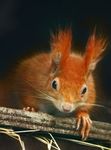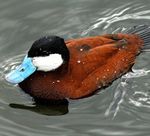The 2018 Prince Philip Award & Marsh Prize for studies in animal biology - ZSL
←
→
Page content transcription
If your browser does not render page correctly, please read the page content below
The 2018 Prince Philip Award & Marsh Prize
for studies in animal biology
The Prince Philip Award and Marsh Prize is open to students under 19 years old on 1st January in
the competition year. Entrants must be/have been pupils of a school/college in Great Britain or
Northern Ireland. The winner receives a monetary prize (£600), a bronze medal and a certificate.
The winner will have the opportunity to publish a summary of their project in Young Scientists
Journal.
Project Guidelines
The entry should be a written account of practical work involving some aspect of animal
biology, e.g. behaviour, physiology or ecology. Students should identify one or two
simple problems to solve or ‘study areas’ to concentrate on, rather than try to ‘discover
everything’ about the animals being investigated.
The project should be about 3000 words and include photos, tables and graphs. The
introduction should explain the aims of the study and record relevant background
reading. Experimental results should be replicated where possible and appropriate
controls used. The interpretation of results and discussion should describe the findings
and highlight potential areas for future research.
The project should be of a standard comparable with an A-Level project or Higher.
Features of a good project include:
• a precise testable hypotheses
• sound methodology to collect data relevant to the hypotheses
• appropriate statistical analysis and critical interpretation
Presentation
The study should conform to the style in which scientific work is published. Generic and
specific names should be italicized; graphs should be labelled and the units given.
Published material should be acknowledged and references given. Long tables of results
and their statistical treatment should be included in the appendices. The nature and the
extent of any help received should be specified in the cover letter.
The final project should include the following sections:
1. Title page, giving the name of the project, the author(s), the name, address
and contact details of the school or college
2. Abstract (an abbreviated version of the project)3. Table of contents
4. Introduction. The introduction should introduce the reader to the aims and context of the study. It
should state why the project was undertaken and give a brief account of any background reading.
5. Hypothesis. A testable hypothesis should be formulated and stated in a concise form. The nature of
the problem to be investigated should be clearly defined using relevant biological knowledge,
principles and concepts. Limitations of the study, such as small sample sizes or limited control over
experimental manipulations, should be given.
6. Materials and Methods. Describe the experimental procedure in sufficient detail in order for the
study to be replicated. Use appropriate controls as required. The choice of apparatus and materials
should be described and justified. The number and types of observations and measurements should
be explained. A clear description of how important variables are to be controlled to produce
reliable results should be given. Where appropriate, a thorough risk assessment of hazardous
procedures or substances should be undertaken. Consideration should be given to the ethical
implications of the choice of treatment of living organisms and the environment.
7. Data Analysis and Results. Ensure there is sufficient data to test whether your hypothesis is correct.
Summarize your data with an average, if appropriate. Ensure that units of measurement are given
for all data.
8. Results and Discussion. The interpretation and discussion of results should include consideration of
the limitations of the work undertaken. The results should be restricted to a factual account of the
findings. The Discussion should point out the significance of the results in relation to the reasons for
undertaking the research.
9. Conclusions. Summarize your results and use these to support your findings. State whether you
proved or disproved your hypothesis. Summarize and evaluate the experimental procedure and
comment on its success and effectiveness. Suggest how the experimental procedure could be
improved.
10. Ideas for Future Research. You should indicate what additional research might be carried out based
on what you have learned.
11. Acknowledgements
12. Bibliography. The bibliography should list all books, journals and Internet sources used to research
the topic. Each time an information source is used, you will need to cite the source that it came
from. To cite a source, put the author's name and the date of the publication in parentheses
(Author, date) in your text. The source must be listed in a bibliography or reference list.
The reference for each source should include:
• Author name
• Title of the publication (and title of the article if it appears in a journal or encyclopedia)
• Date of publication
• Place of publication and publisher (for a book)
• The volume number of a journal or encyclopedia
• Page numbers
Examples of ReferencesReferences must be arranged first alphabetically under author(s) name(s) and then in chronological order if several papers by the same author(s) are cited. Jones, P. (2006). Relationships between hand morphology and feeding in prosimians. Journal of Zoology 273: 148-156. Smith, E. R. (1999). Evolution and ecology. 2nd edn. New York: Harper & Row. White, A. (2002). Hystricomorph vocalisations. In The biology of hystricomorph rodents: 101-125. Rowntree, A. (Ed.). London: Chapman & Hall. Rules Entrants must be under 19 years old on 1st January in the current year and must be/have been pupils of a school/college in Great Britain or Northern Ireland. Head teachers and/or senior science staff are asked to select entries of an appropriate standard. An entry may be the work of one individual or a joint project from not more than two pupils. Each entry must be accompanied by a letter from the teacher giving the full name, address and date of birth of the pupil, and the name and address of the school/college. The letter should indicate the nature and extent of any assistance given to the pupil. Judging Entries will be judged by a panel of scientists and education officers and marked on accuracy of observation, planning, interpretation, significance of conclusions, style of writing and neatness of presentation. Entries should be sent to: The Secretary, Awards Committee, Zoological Society of London, Regent’s Park, NW1 4RY, by 30 November 2018 For more information please contact Linda DaVolls on 020 7449 6272, Email: linda.davolls@zsl.org Many thanks to the Marsh Christian Trust and Young Scientists Journal for their support of the award Photos © Tony Weeks; http://www.copyright-free-pictures.org.uk/ ; Kathryn Hedges http://pics.tech4learning.com
You can also read






















































